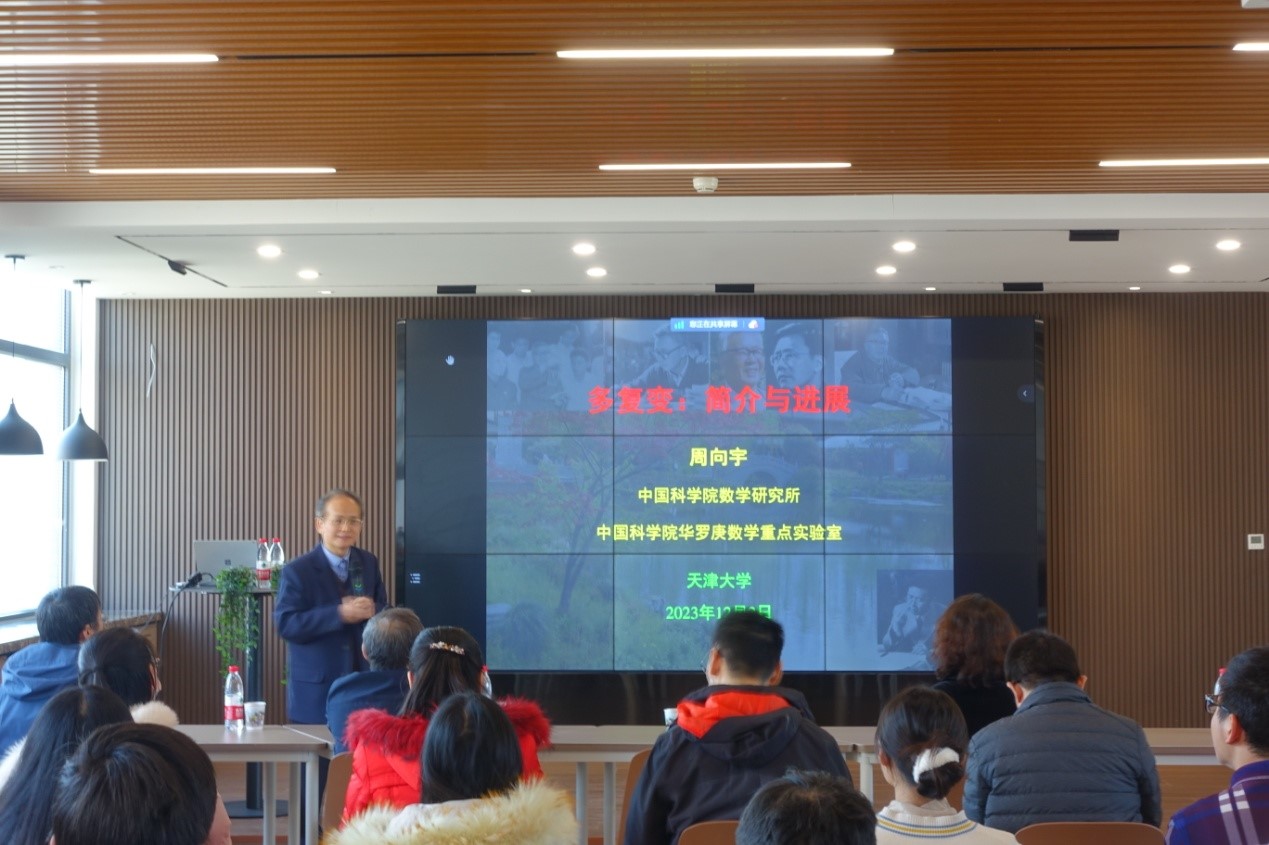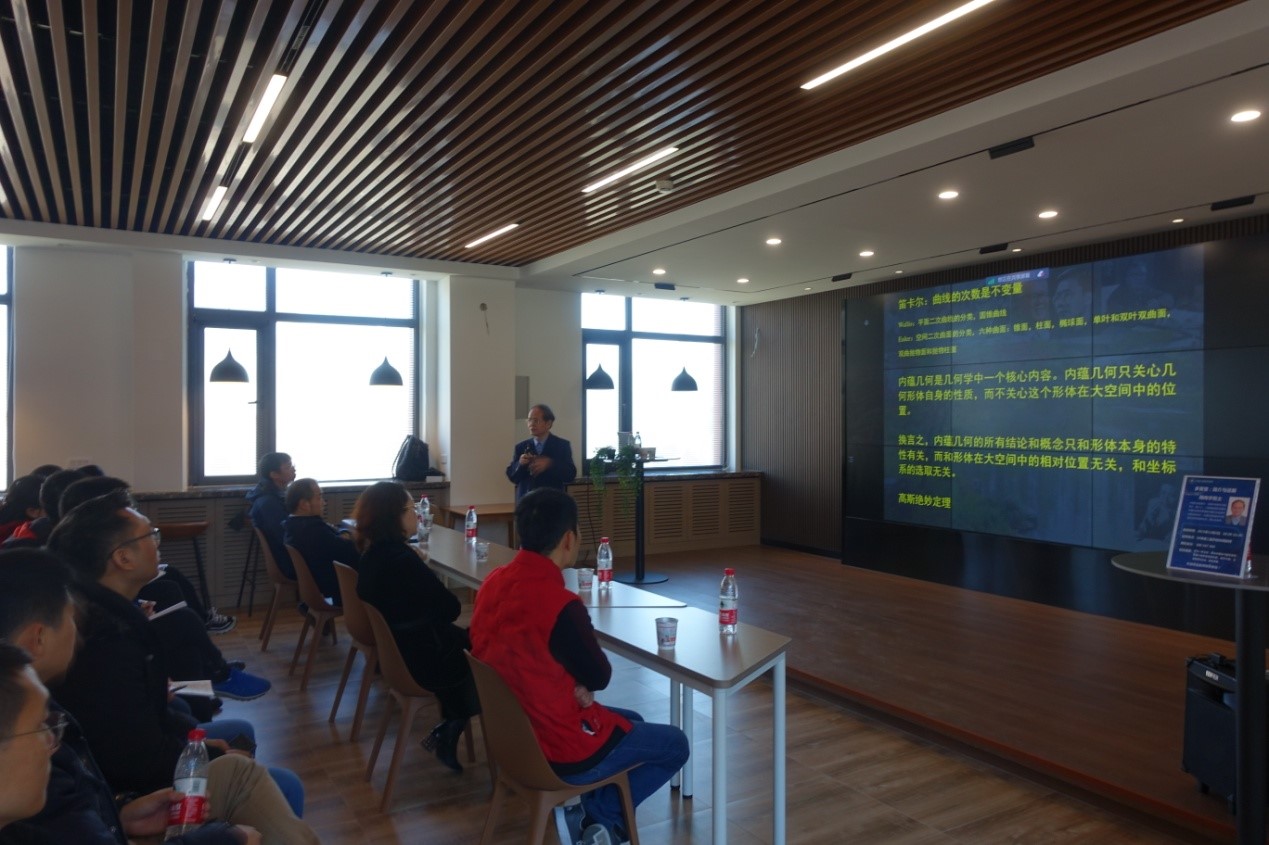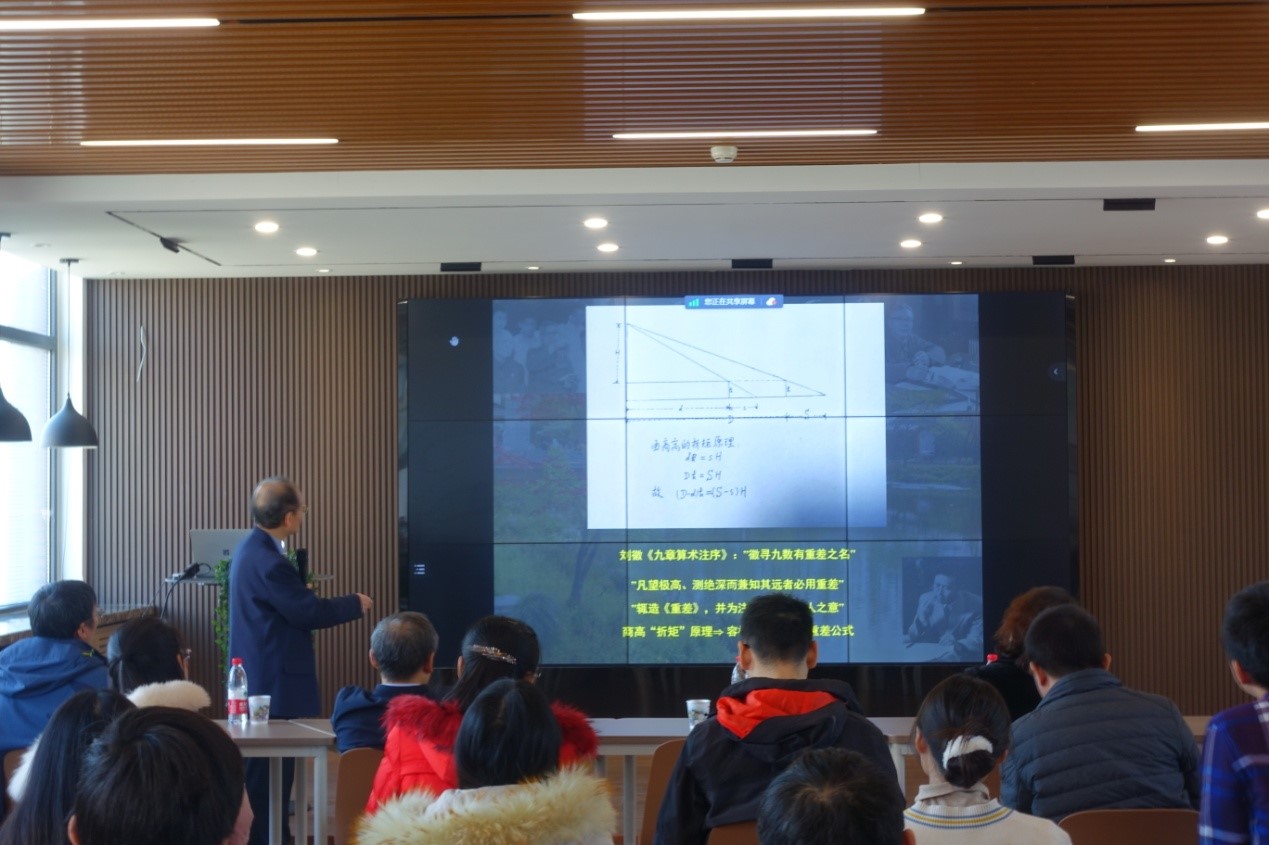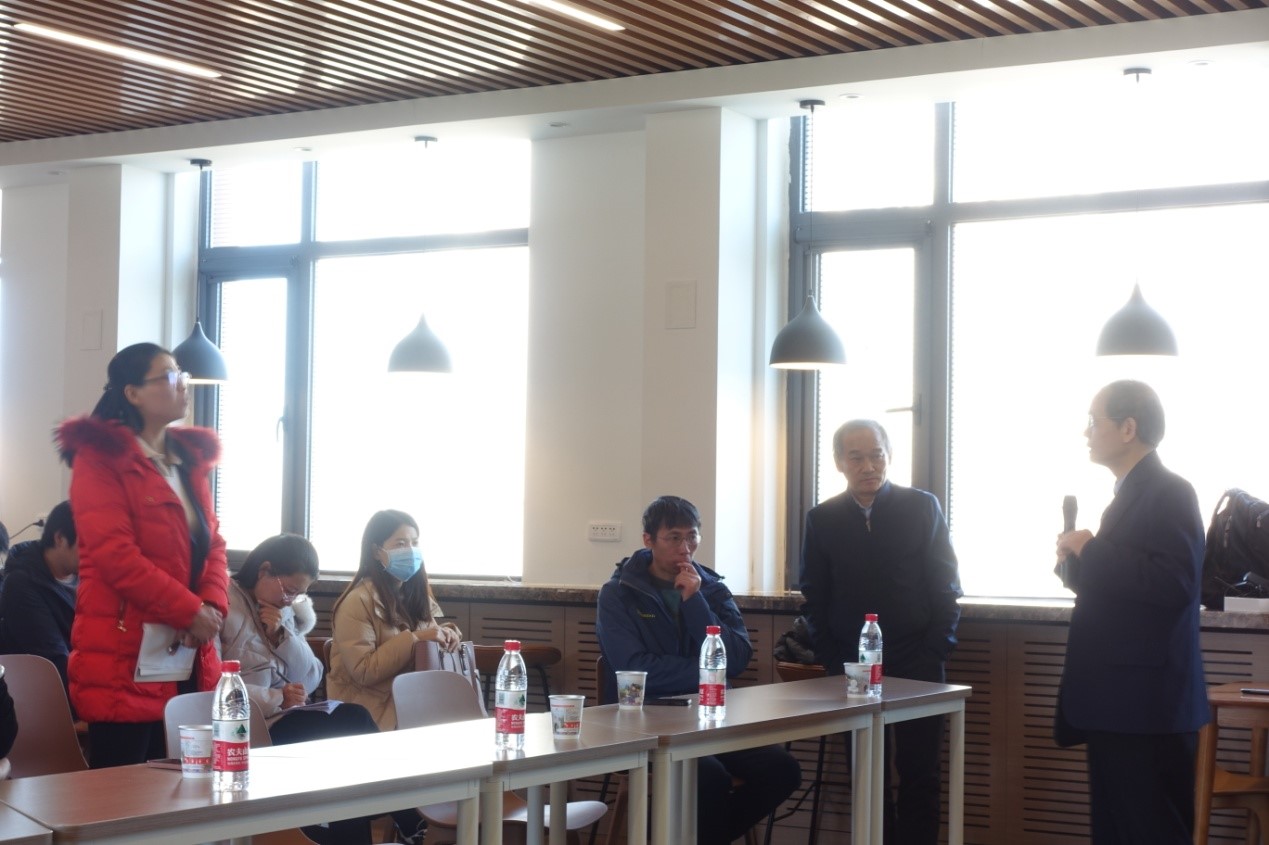On the morning of February 2nd, a lecture titled "Several Complex Variables: An Introduction and Progress" was delivered in the School of Mathematics at Tianjin University, by Professor Zhou Xiangyu, the renowned Chinese mathematician and member of the Chinese Academy of Sciences and the World Academy of Sciences. Faculty and students from the School of Mathematics at Tianjin University, as well as several other universities in Tianjin, attended the lecture.

The report started with an exploration of the doorman problem, segueing into the central theme of the presentation: what is several complex variables? Where does it come from? And where is it heading? To answer these questions, Academician Zhou commenced by proving the Pythagorean theorem through similar triangles, then progressed to discuss principles of similarity, parallelism, and the difference formula. He succinctly outlined the evolution and significance of ancient Chinese mathematics, encapsulating key concepts introduced by Shang Gao and Zhao Shuang regarding "invariant forms," which underpin modern mathematical principles. Then Professor Zhou discussed several complex variables.

Professor Zhou Xiangyu provided an overview of the history and current state of the discipline of several complex variables, so as to guide the audience to think about the doorman problem in this area. He highlighted the transformation of this field from a mere extension offunction theory of one complex variablein the late 19th century to an independent discipline. This evolution was driven by two pivotal discoveries: firstly, Poincaré discovered that there is no straightforward generalization of Riemann's mapping theorem in several complex variables; secondly, the identification of Hartogs' phenomenon, which introduced the crucial concept ofdomains of holomorphy. These unique phenomena led to significant challenges in several complex variables, such as the Levi problem and the first and second Cousin problems, which have since been resolved. The resolution of these problems, along with the development of Cartan's theorems A and B on Stein manifolds in the 1960s, greatly advanced this field. Later developments in the 1990s, such as the application of L2 methods and the introduction of concepts like multiplier ideal sheaves, paved the way for the unified path between several complex variables and algebraic geometry.

During the presentation, Prof. Zhou also discussed the practical applications of several complex variables theory in fields such as quantum field theory. Notably, he successfully resolved a significant problem—theExtended Future Tube Conjecture. In the end, he highlighted new developments in critical issues within several complex variables, including the L2 extension problem with optimalconstantand the Strong Openness Conjecture for multiplier ideal sheaves. Academician Zhou Xiangyu and his team have made substantial contributions to solving these problems, earning high praise from international peers. Their work has become a crucial tool for addressing many challenges in the current landscape of several complex variables.

During the Q&A session, Professor Zhou engaged in a thorough discussion with audience on topics such as the latest advancements in several complex function space theory, Lp extension problems, and the potential role of several complex variables in the development of analytic number theory.




